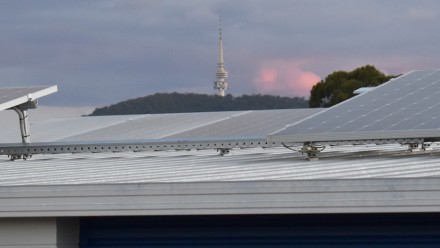Funding boost means sunny days for solar innovation
ANU media release
A $4.5 million funding boost will help researchers at The Australian National University (ANU) develop next-generation solar cell technology.
The money will go towards state-of-the-art research equipment for three separate projects.
The funding is partly from the Australian Renewable Energy Agency's (ARENA) Australian Centre for Advanced Photovoltaics Infrastructure project ($3.6 million) and is supported with co-funding from ANU ($0.9 million).
Dr Kean Chern Fong and his team will receive $3.1 million for a new 'nano-engineering' laboratory. The lab will help create new materials to enhance the conversion of solar energy to electricity in photovoltaic devices.
Dr Fong says this lab will help Australian researchers "set the pace" when it comes to simultaneously reducing cost and improving efficiency in solar cells, as well as the development of novel photovoltaic concepts.
"This laboratory will be one-of-a-kind internationally," Dr Fong said.
"It will empower world-class scientists and aspiring PhD candidates in Australia towards development of revolutionary technologies for many years to come."
Dr Hieu Nguyen and his team have received $1 million for equipment which will allow researchers to more precisely measure light absorbed and emitted from solar materials.
"This technology will mean we can move a step closer to unlock the full potential of photovoltaics as a clean, affordable, and sustainable energy source for Australia and the world," Dr Nguyen said.
"Because every part of light has features corresponding to certain material and device properties, we can diagnose their characteristics by just 'looking at' them, rather than touching them - thus avoiding possible damage."
Associate Professor Tom White's team has also been awarded $0.4 million for an advanced perovskite processing capability tool.
It will be used to develop high-efficiency tandem solar cells that combine silicon solar cells with perovskites - a new type of semiconductor that's cheap and easy to process.
"The new tool will allow us to deposit very thin perovskite solar cells directly on top of silicon solar cells," Associate Professor White said.
"By combining two different technologies in this way we can increase the energy output of the solar cell."
The research will contribute to unlocking the full potential of photovoltaics as a clean, affordable, and sustainable energy source for Australia and the world.











